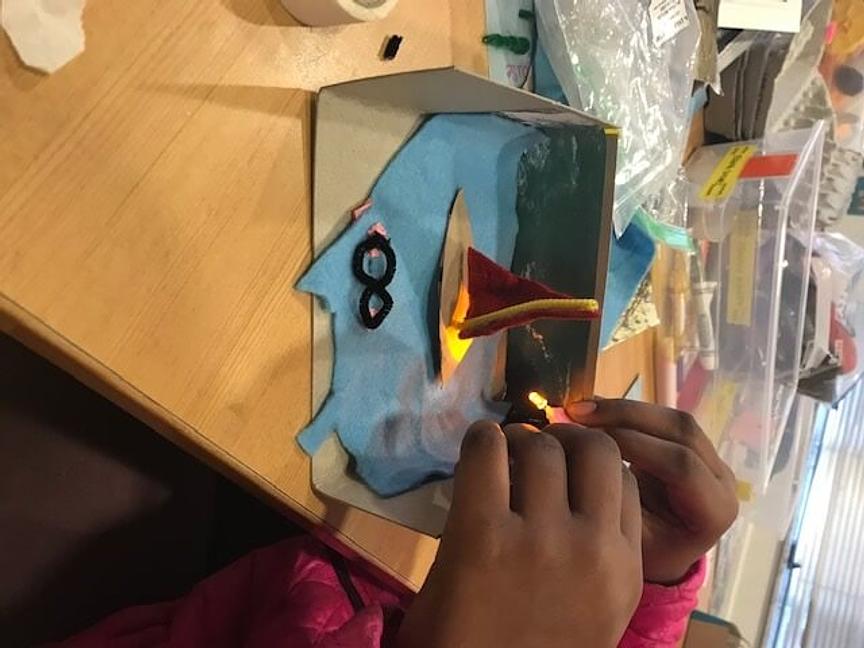Auberle is a non-profit organization that serves children, youth and families in various capacities. The residential and homeless youth served through this program have come to us due to family issues, behavioral problems, or homelessness. Our residential facilities aim to help youth receive support and gain necessary life skills.
For this innovation, a "Learning Innovation Coordinator" was hired to carry out STEAM education for youth at Auberle. A need has been identified on a national level for an increase in STEAM education, especially for at-risk youth. With many of the youth we serve being African American and from economically disadvantaged households, it is especially important that opportunities in these subjects are provided. With the STEM fields being dominated by white males, it is imperative that a more diverse population is reached and encouraged to pursue careers in these areas. Many of our residents struggle academically, socially, and emotionally, and face many hurdles on their path to success. The vast majority have lived through traumatic experiences. By providing opportunities in Science, Technology, Art, Engineering, and Math, the goal is to inspire, motivate, excite, encourage, and support these youth. The aim of the activities provided is to foster a love of learning, an interest STEAM and Making, increased social skills, and a place to explore, create, and make mistakes in a safe space. By creating and learning new skills, youth have the opportunity to take ownership over their own learning and to experience small triumphs, which will lead to increased self-efficacy and self-esteem. We hope that the activities will act as a catalyst to prompt the youth to seek out further opportunities in STEAM and Maker education, to dig deeper, and to uncover passions and talents that may otherwise go undiscovered.
A wide variety of STEAM activities have been offered to our residents. These have included robotics, coding, art, science experiments, engineering challenges, math activities, and gardening. We will be adding environmental education, chicken keeping, and culinary arts this summer. The activities are hands-on, fun, and engaging. As often as possible, the various disciplines within STEAM are integrated into any given lesson. We strive for open-ended learning and room for questions and exploration. Many of our lessons have stemmed from questions asked or interests expressed by residents.
Due to the nature of our organization—residents living in housing that is not in one central location—we found a need to plan around the need for mobility. Therefore, the majority of activities outlined here can be easily transported, the major exceptions being the garden and the chickens. We do have the ability to transport the youth to our main campus when needed; however, we have found it is easier for the youth to be able to stay in their residential spaces and to have the activities come to them. For this reason, we generally avoid purchasing equipment or materials that cannot be taken from site to site.
In order to limit expenditures, we have been able to tap into a variety of local organizations for support. We have had the opportunity to partner with an organization who lends out robotics and technology kits to use with the youth. This has allowed us to utilize Makey Makey Kits, Bee-Bots, Finch Robots, Brushbots and Hummingbird Robots. Additionally, we have reached out to local organizations to provide either inexpensive or free programming for the youth. This has been an integral part of the educational programming, because in addition to the cost consideration, the Learning Innovation Coordinator does not hold expertise in every area we are aiming to cover with this innovation. One example is a workshop series on sewing that was taught by a local nonprofit organization we were able to partner with. We also connect with other branches within our own organization, such as the Employment Institute and the 412 Youth Zone to share ideas and set youth up with opportunities that may help them in their education and future careers.
In planning the programming, we have found that there is a myriad of resources in the form of in-person and online training, as well as YouTube tutorials and endless internet resources with articles, lesson plans, and instructions on just about any subject imaginable.
Youth input has been an important part of the the planning process as well. Educators and staff consistently discuss with students what their interests and goals are, and strive to incorporate them into the plans. It is a constant learning process for everyone involved, and we have learned the need to stay flexible and open to change. We are constantly working to make new connections, and stay in tune with best practices in the STEAM Education arena. We find it important to continue expanding and growing our programming to reach youth who are struggling and are prone to “falling through the cracks” of the educational system. With some planning, dedication, excitement, and creativity, we believe any individual or organization can access and provide this type of programming for the youth they serve as well.

